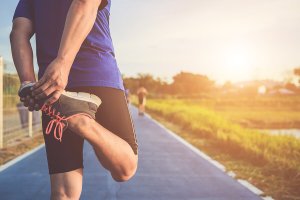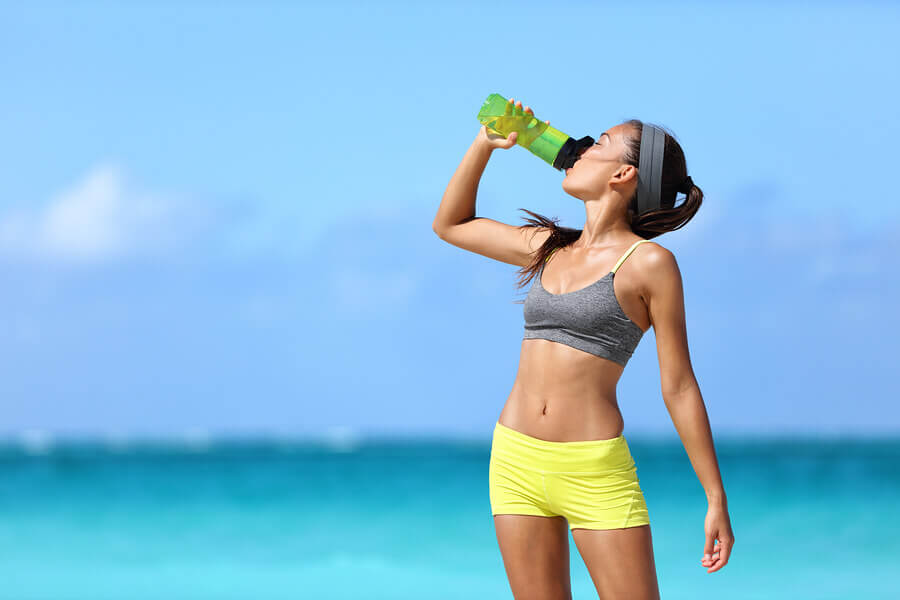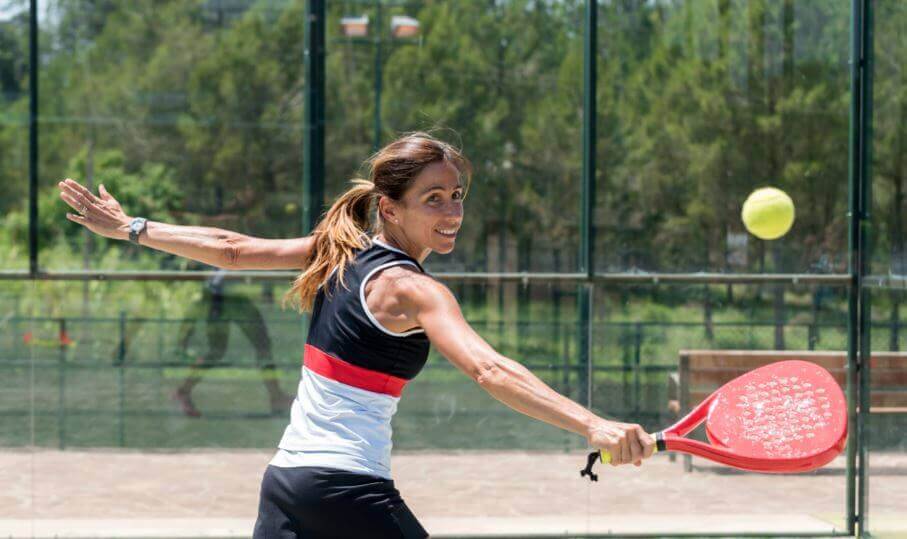Tips for Doing Sports in the Summer

With summer just around the corner, it seems impossible not to think about how rising temperatures can affect sports performance. If proper precautions are taken, the quality of your training sessions shouldn’t be affected. By following these tips for summer sports, you’ll ensure that the heat won’t ruin your training sessions.
Sometimes, when summer arrives, it hinders the continuity and productivity of training. High temperatures can decrease your willingness to perform outdoor activities.
However, summer is also a great time to practice other sports that aren’t suitable for colder times of the year such as surfing and swimming.
Summer is the perfect time to have fun outdoors. The time of day you’re training outdoors is an important aspect to consider. Mornings are usually the best times to exercise, especially if it’s going to be a very hot day.
The best tips for doing sports during the summer
This is a good time to set excuses aside and be aware of how important it is to continue training even during the summer months. If you decide to train, you’ll have to adopt a few tips to combat the high temperatures.
Adequate clothing
The first of our tips for performing sports during the summer is selecting the right clothes. Ideally, you should select light clothes (in color and weight) that are made of absorbent materials to facilitate sweat evaporation.
When selecting clothes it’s also important to invest in UV protective clothing. There are many materials that are designed to protect the skin from the sun’s rays.

Hydration
Staying hydrated is one of the most important aspects when it comes to summer sports. When you sweat, your body loses water, electrolytes, and salt.
This delicate balance between water and electrolytes is crucial for the body to function properly. If you don’t drink enough water, you may become dehydrated and suffer from nausea and dizziness.
If the signs of dehydration aren’t recognized, it can even lead to kidney failure; death in extreme cases. On the other hand, drinking too much water without replacing electrolytes can lead to hyponatremia.
Sun protection: essential when doing sports in the summer
Sun protection is a necessity. During the summer you can suffer from sunburn and skin damage, even on cloudy days. Sunscreen should be applied 15 minutes before and reapplied every two hours. It should also be reapplied after sweating or swimming.
Use extra caution near water and sand, they reflect UV rays causing sunburn to appear faster. Ideally, you should remain in the shade for as long as possible in order to limit sun exposure during peak times.
Warming up
Evening during the summer, it’s important to gently warm up your muscles and joints before playing sports. In addition, after being active outdoors, you should also give your body time to cool down before entering a significantly different environment, such as an air-conditioned building.

Whichever discipline you choose, with increased outdoor fun, there’s an increased risk of injury. It’s important to be aware of the potential dangers of summer sports. Take active steps to stay safe.
In conclusion, we hope our list of tips for doing sports in the summer has proven interesting enough to prevent you from skipping workouts. In any case, the most important aspect is to always pay attention to your body. If you’re feeling dizzy, weak or nauseous, you should stop training and seek immediate medical attention to detect the signs of heat-related illnesses.
With summer just around the corner, it seems impossible not to think about how rising temperatures can affect sports performance. If proper precautions are taken, the quality of your training sessions shouldn’t be affected. By following these tips for summer sports, you’ll ensure that the heat won’t ruin your training sessions.
Sometimes, when summer arrives, it hinders the continuity and productivity of training. High temperatures can decrease your willingness to perform outdoor activities.
However, summer is also a great time to practice other sports that aren’t suitable for colder times of the year such as surfing and swimming.
Summer is the perfect time to have fun outdoors. The time of day you’re training outdoors is an important aspect to consider. Mornings are usually the best times to exercise, especially if it’s going to be a very hot day.
The best tips for doing sports during the summer
This is a good time to set excuses aside and be aware of how important it is to continue training even during the summer months. If you decide to train, you’ll have to adopt a few tips to combat the high temperatures.
Adequate clothing
The first of our tips for performing sports during the summer is selecting the right clothes. Ideally, you should select light clothes (in color and weight) that are made of absorbent materials to facilitate sweat evaporation.
When selecting clothes it’s also important to invest in UV protective clothing. There are many materials that are designed to protect the skin from the sun’s rays.

Hydration
Staying hydrated is one of the most important aspects when it comes to summer sports. When you sweat, your body loses water, electrolytes, and salt.
This delicate balance between water and electrolytes is crucial for the body to function properly. If you don’t drink enough water, you may become dehydrated and suffer from nausea and dizziness.
If the signs of dehydration aren’t recognized, it can even lead to kidney failure; death in extreme cases. On the other hand, drinking too much water without replacing electrolytes can lead to hyponatremia.
Sun protection: essential when doing sports in the summer
Sun protection is a necessity. During the summer you can suffer from sunburn and skin damage, even on cloudy days. Sunscreen should be applied 15 minutes before and reapplied every two hours. It should also be reapplied after sweating or swimming.
Use extra caution near water and sand, they reflect UV rays causing sunburn to appear faster. Ideally, you should remain in the shade for as long as possible in order to limit sun exposure during peak times.
Warming up
Evening during the summer, it’s important to gently warm up your muscles and joints before playing sports. In addition, after being active outdoors, you should also give your body time to cool down before entering a significantly different environment, such as an air-conditioned building.

Whichever discipline you choose, with increased outdoor fun, there’s an increased risk of injury. It’s important to be aware of the potential dangers of summer sports. Take active steps to stay safe.
In conclusion, we hope our list of tips for doing sports in the summer has proven interesting enough to prevent you from skipping workouts. In any case, the most important aspect is to always pay attention to your body. If you’re feeling dizzy, weak or nauseous, you should stop training and seek immediate medical attention to detect the signs of heat-related illnesses.
All cited sources were thoroughly reviewed by our team to ensure their quality, reliability, currency, and validity. The bibliography of this article was considered reliable and of academic or scientific accuracy.
- Anderson-Butcher, D., Iachini, A., Riley, A., Wade-Mdivanian, R., Davis, J., & Amorose, A. J. (2013). Exploring the impact of a summer sport-based youth development program. Evaluation and Program Planning, 37, 64–69. https://doi.org/10.1016/j.evalprogplan.2013.01.002
- E. Randy Eichner. (2002). SSE #86: El golpe de calor en el deporte: causas, prevención y tratamiento. Sports Science Exchange, 15(3), 1–3.
- Ubiratan, F., & Silveira, D. (2006). El efecto de la deshidratacion en el rendimiento anaeróbico. Revista de Ciencias Del Ejercicio y La Salud ®, 4, 13–21.
- Urdampilleta, A., & Gómez-Zorita, S. (2014). De la deshidratación a la hiperhidratación; bebidas isotónicas y diuréticas y ayudas hiperhidratantes en el deporte. Nutricion Hospitalaria. https://doi.org/10.3305/nh.2014.29.1.6775
- Wolman, R., Wyon, M. A., Koutedakis, Y., Nevill, A. M., Eastell, R., & Allen, N. (2013). Vitamin D status in professional ballet dancers: Winter vs. summer. Journal of Science and Medicine in Sport, 16(5), 388–391. https://doi.org/10.1016/j.jsams.2012.12.010
This text is provided for informational purposes only and does not replace consultation with a professional. If in doubt, consult your specialist.








